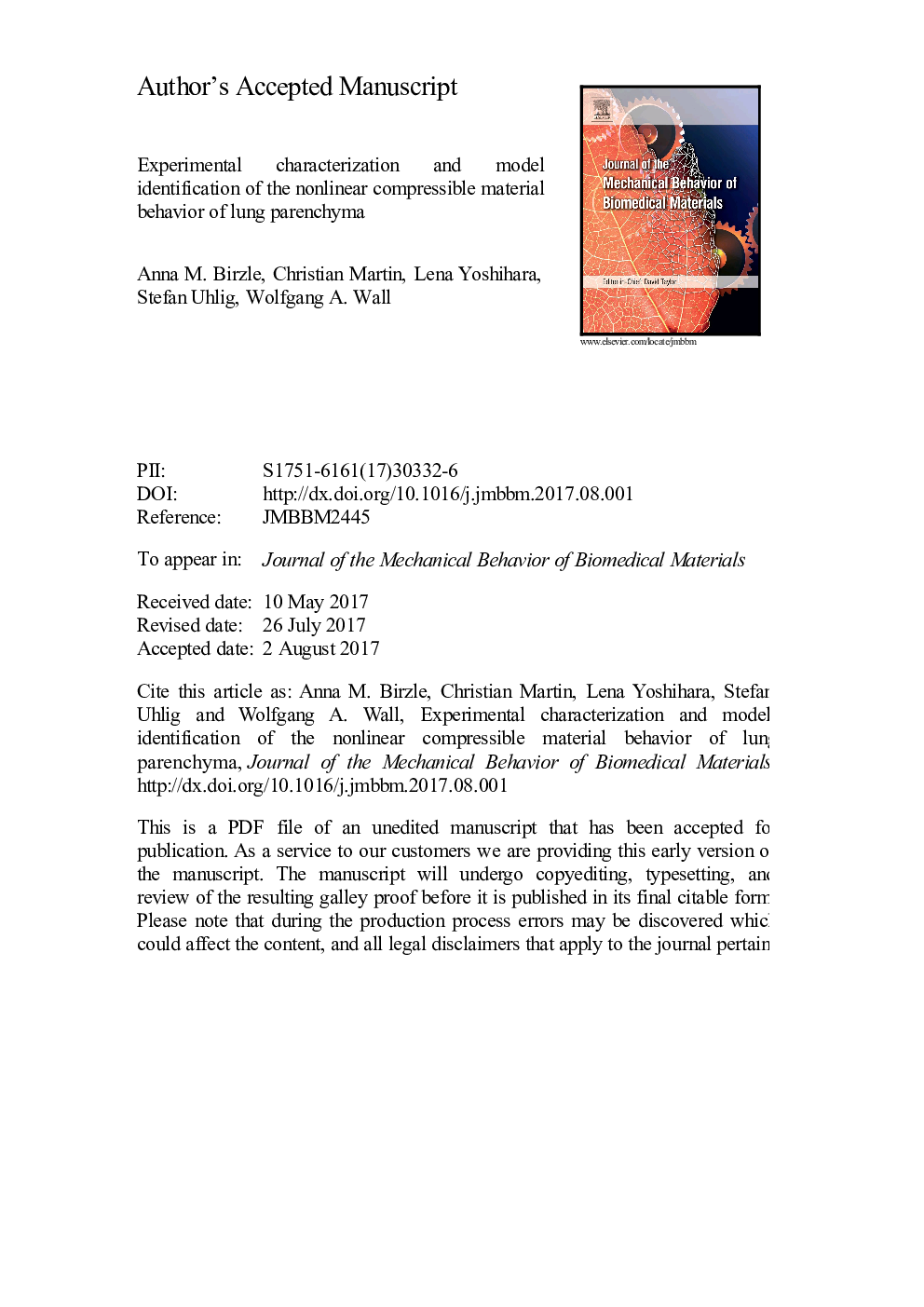| Article ID | Journal | Published Year | Pages | File Type |
|---|---|---|---|---|
| 7207421 | Journal of the Mechanical Behavior of Biomedical Materials | 2018 | 13 Pages |
Abstract
The mechanical properties of lung parenchyma are essential both in lung function and biology; consequently, experimental methods are developed to describe the mechanical behavior of lung parenchyma. During breathing and mechanical ventilation, volume change is the physiologically dominating deformation mode of lung parenchyma; nevertheless, most studies examine lung tissue in mainly isochoric tension tests. In this paper, a novel experimental method for the quantification of the compressible material behavior at high volume changes of viable lung parenchyma is proposed. This volume-pressure-change experiment quantifies the pressure and corresponding volume change of lung parenchyma slices. For the characterization of the compressible constitutive properties over the whole physiological pressure range, we combine this newly derived experiment with uniaxial tension tests. The experimental results of both the volume-pressure-change experiments, for which 287 samples were examined, and the uniaxial tension tests, which were performed on 36 specimens, are presented. The resulting measurements are utilized to optimize the material parameters of one suitable hyperelastic strain-energy function describing the nonlinear compressible material behavior of viable lung parenchyma. The derived constitutive model can be used for simulations of lung parenchyma, and will help to quantify the strains and stresses of lung tissue during normal breathing and mechanical ventilation.
Related Topics
Physical Sciences and Engineering
Engineering
Biomedical Engineering
Authors
Anna M. Birzle, Christian Martin, Lena Yoshihara, Stefan Uhlig, Wolfgang A. Wall,
